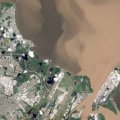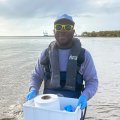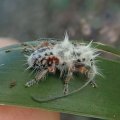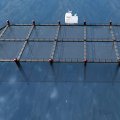University of Queensland scientists are concerned about news from the US National Ocean and Atmospheric Association (NOAA) that coral bleaching is likely to continue as hotter-than-normal ocean temperatures continue for the third consecutive year.
The marine scientists working on the XL Catlin Seaview Survey were shocked to see as much as half of corals in Big Island and other sites in Maui, Hawaii had died as a result of unusually hot conditions in 2015.
Expedition leader and UQ Global Change Institute scientist Dr Manuel Gonzalez-Rivero said he was disheartened by the latest surveys.
“One-hundred to two-hundred-year-old colonies of the lobe coral and almost all of the cauliflower coral gardens that dominated the reefs we visited 11 months ago were gone, with only one or two small colonies remaining,” Dr Gonzalez-Rivero said.
The team first surveyed Hawaii in August 2015 as part of the XL Catlin Seaview Survey, gathering important baseline information ahead of the current global coral bleaching event.
In November 2015, the team re-visited the locations to monitor conditions during the height of coral bleaching.
The team is now capturing the aftermath of the bleaching event and the implications for Hawaiian coral reef ecosystems.
“These three comparable data sets will provide a rare measure of coral response across a wide span of the islands following a major bleaching event,” Dr Gonzalez-Rivero said.
“Local stressors such as sediment run-off is a critical problem for Hawaiian reefs, slowing and even preventing them from recovering from coral bleaching.
“Managing this problem can help alleviate the long-term effect of climate change on these reefs.
“Reefs that lose corals are expected to lose fish and many other organisms.
“On the bright side, about half the reefs visited by our team remain visually unaffected by the differences in heat experienced last summer.”
Global Change Institute Director and XL Catlin Seaview Survey chief scientist Professor Ove Hoegh-Guldberg said there were many reasons to be optimistic.
“Hawaiian reefs are still growing in many places and are worth visiting,” Professor Hoegh-Guldberg said.
“However, if we don’t take strong action today on global warming, coral reefs around Hawaii will be a distant memory in 20 years’ time.
“The time to act is now. Had we acted 20 years ago, when we knew global warming was a major threat, we would have avoided many of the problems we are currently seeing for coral reefs.
“What we have to do now is act quickly before we lose the lot.”
Media: Dr Manuel Gonzalez-Rivero in Hawaii on +1 808 6408374; Professor Ove Hoegh-Guldberg, oveh@uq.edu.au; GCI communications Rachael Hazell, r.hazell@uq.edu.au, 07 3443 3150.










